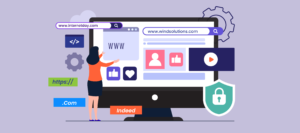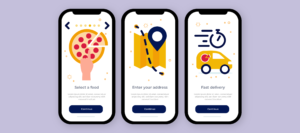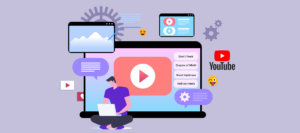On-demand grocery shopping apps are becoming increasingly popular, as they offer a convenient and easy way for consumers to purchase groceries. These apps allow users to browse and select products from a variety of retailers, and then have their groceries delivered to their door.
Turning now to Statista, it is anticipated that by 2027, there will be 1,995.0 million users in this industry. This growth is being driven by a number of factors, including the increasing convenience of online shopping, the rising popularity of healthy eating, and the growing number of dual-income households.
Some of the most popular grocery shopping apps include Instacart, Bigbasket, and Walmart Grocery. These apps have all generated significant levels of revenue, and they all include a number of the features that will be discussed in this blog post. Let’s get started!
Grocery Shopping App Development Features
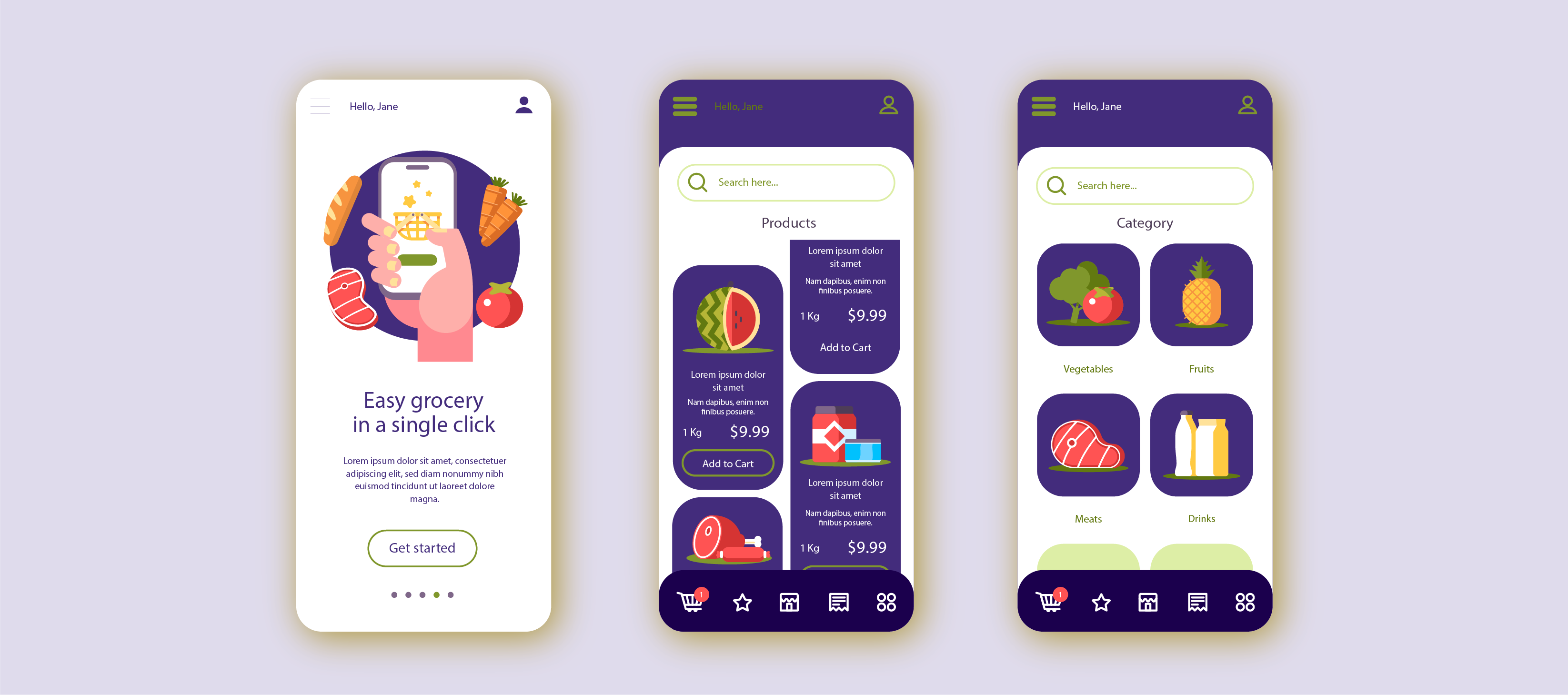
1. Product browsing and search:
Users should be able to browse and search for products in the app easily. Grocery shopping app development search feature should be fast and accurate, and the product browsing experience should be user-friendly.
One way to improve the product browsing and search experience is to use a variety of filters, such as category, brand, price, and dietary restrictions. This will help users quickly find the products they are looking for. You can also use artificial intelligence (AI) to recommend products to users based on their past purchases and browsing history.
2. Shopping cart and checkout:
Users should be able to add items to their shopping cart and checkout quickly and easily. The checkout process should be secure and support multiple payment methods.
To make the checkout process as smooth as possible, you can use a variety of features, such as one-click checkout and guest checkout. You can also offer users the option to save their shipping and billing information for future purchases.
3. Order tracking:
Order tracking will help users to know when to expect their groceries to arrive. You can provide users with real-time order tracking by integrating your app with your order management system. This will allow users to see where their order is in the process, from the moment it is placed to the moment it is delivered.
4. Order history:
Users should be able to view their order history and reorder items with ease. This will save them time and effort when shopping for groceries.
You can make it easy for users to reorder items by allowing them to save their favourite items and shopping lists. You can also send users notifications when items on their shopping lists are on sale or back in stock.
5. Personalized recommendations:
Grocery shopping app development should provide users with personalized recommendations based on their past purchases and browsing history. This will help them to discover new products and save money.
To provide personalized recommendations, you can use AI to analyze users’ purchases and browsing data. This will allow you to identify patterns and trends and then use that information to recommend products that users are likely to be interested in.
6. Coupons and discounts:
The app should offer users coupons and discounts to help them save money on their grocery purchases. This will make the app more attractive to users and encourage them to shop for groceries more often.
You can offer users coupons and discounts in a variety of ways, such as through push notifications, email marketing, and in-app promotions. You can also partner with grocery manufacturers to offer exclusive discounts to your users.
7. In-app messaging:
The app should allow users to communicate with the store in real-time. This will help them to get answers to their questions and resolve any issues that they may have.
You can provide in-app messaging by integrating a live chat feature into your app. Grocery shopping app development will allow users to chat with customer service representatives in real-time. You can also use in-app messaging to send users notifications about important updates, such as changes to your store hours or delivery policies.
8. Multiple store support:
The app should allow users to shop from multiple stores at the same time. This will save them time and effort, and it will also give them more options when it comes to choosing products and prices. To provide multiple-store support, you can partner with multiple grocery stores and integrate their inventory and pricing data into your app. This will allow users to browse and purchase products from multiple stores without having to switch apps.
9. Integration with third-party services:
Grocery shopping app development should be integrated with third-party services such as Google Maps and Apple Maps. This will allow users to get directions to the store and track the status of their deliveries. In addition to integrating with mapping services, you can also integrate your app with other third-party services, such as payment processors and recipe websites. This will make your app more convenient and useful for users.
10. Multilingual support:
The app should support multiple languages so that it can be used by people from all over the world. This will make the app more accessible and inclusive. To provide multilingual support, you can translate your app into multiple languages. You can also use a localization service to translate your app and adapt it to different cultures.
Step-by-Step Process of Grocery Shopping App Development
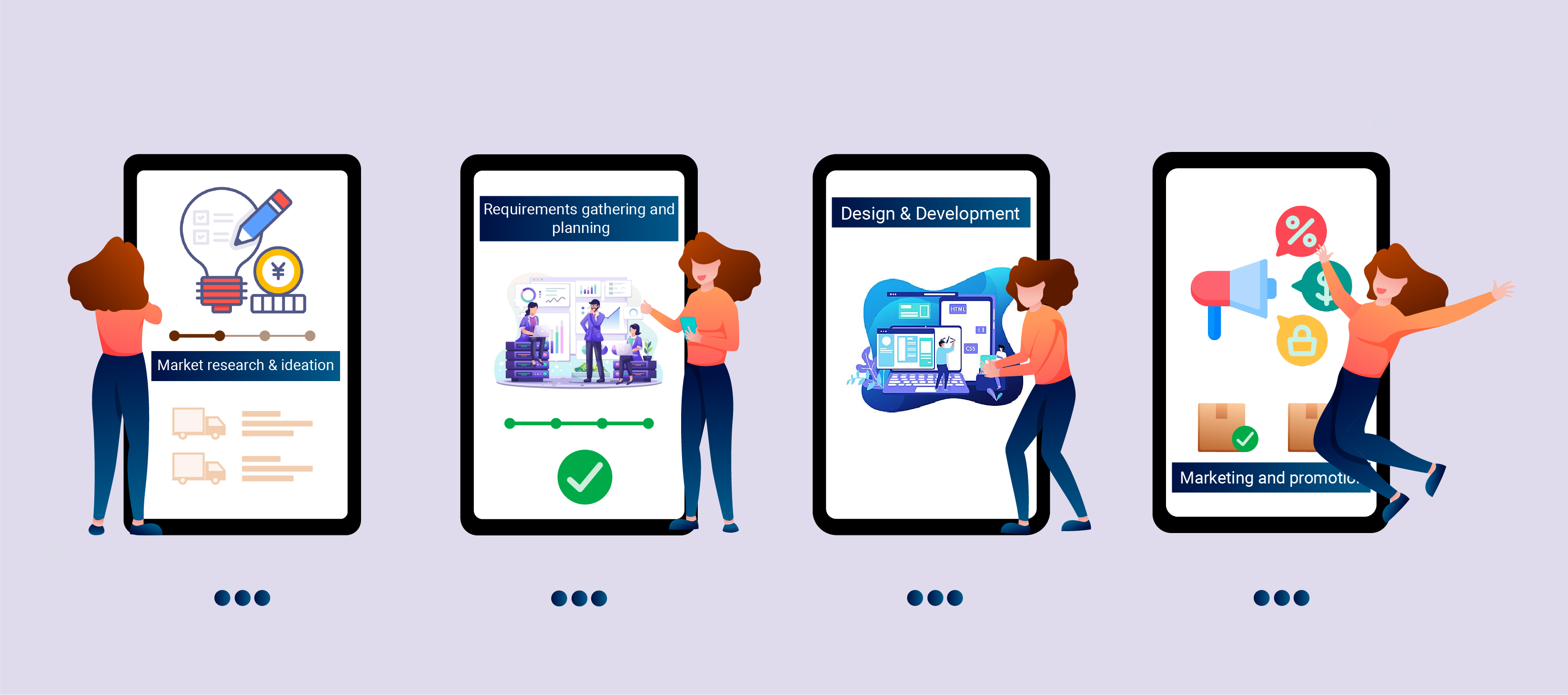
1. Market research and creativity: The first step is to conduct market research to understand the demand for grocery shopping app development in your target region and to identify your competitors. It would be best if you also brainstormed ideas for features and functionality that would make your app unique and valuable to users.
2. Requirements gathering and planning: Once you have a good understanding of the market and your target audience, you need to gather requirements for your app and create a development plan. This includes defining the scope of the app, identifying the key features, and creating a timeline and budget.
3. Design: The next stage is to create your app’s user interface (UI) and user experience (UX). This involves building wireframes and mockups to visualise the app’s structure and functionality. You should also conduct user testing to get feedback on your designs and make improvements.
4. Development: Once the design is finalized, you can start grocery shopping app development. This includes writing the code, integrating with third-party services, and testing the app thoroughly.
5. Testing and deployment: Once the app is developed, you need to test it thoroughly to ensure that it is bug-free and meets all of your requirements. When you are happy with the app, you may publish it to the app store.
6. Marketing and promotion: After the app is launched, you must advertise and promote it to draw users. This may be accomplished through social media, paid advertising, and other ways.
Grocery Shopping App Development Cost
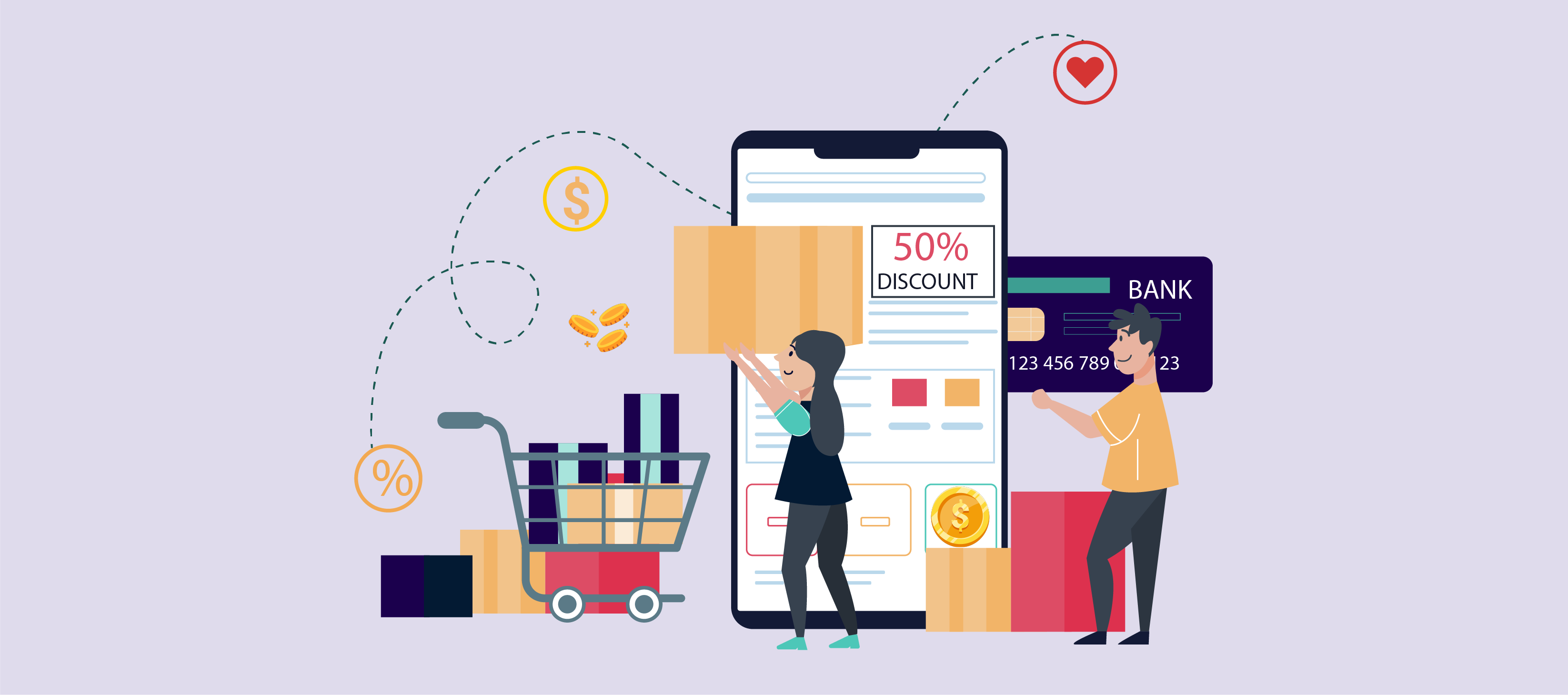
A grocery shopping app development cost might vary significantly based on several aspects, such as the app’s complexity, the features and functionality needed, the platform or platforms it must be designed for, the team’s location, and their level of expertise.
Generally speaking, the development of a simple grocery shopping app with all the necessary functionality, including product browsing, search, checkout, and order tracking, may run you between $15,000 and $25,000. It can cost up to $50,000 or more to design more sophisticated software with extra features like delivery integration, real-time inventory management, and personalized suggestions.
The following is a breakdown of the cost of grocery shopping app development:
|
App Type |
App Development Cost |
|
Basic app |
$10,000 to $30,000 |
|
Medium-sized app |
$30,000-$50,000 |
|
Complex app |
$50,000-$100,000 |
Conclusion
Developing a grocery shopping app of the quality of BigBasket requires a careful examination of all development-related factors, including costs, advantages, features, and procedures. This comprehensive guide has guided you through the features of grocery shopping app development, covering every aspect of your next project!
Among all of these many characteristics, the Features of the grocery shopping app development stand out. Since features are what determine user experience and engagement, they are a crucial component of any on-demand app creation tool. For the same reason, it’s critical to pick characteristics that suit the needs of the company as well as those of the clients.
Read more: Despite the grocery shopping app, if you want to also develop a grocery delivery app then we’ve compiled the best Grocery Delivery App Development Companies.
FAQs
Question 1: How much time does it take for grocery shopping app development?
Plan on 1-2 years if you want something as elegant and feature-rich as BigBasket. At Pairroxz, our goal is to develop a tangible proof of concept in three months and then focus on traction.
Question 2: How can I cut the cost of creating a grocery shopping app?
A few strategies to lower the price of grocery shopping app development are as follows:
- Begin by creating a simple MVP (minimum viable product).
- Select a development team situated in a nation where development expenses are lower.
- Make sure your needs are clear and provide the development team with a thorough specification.
Question 3: What companies benefit the most from grocery mobile app development?
The following are a few of the main advantages of developing mobile apps for groceries:
- Small-scale growers, manufacturers, and craftspeople.
- Businesses that provide foodstuffs to stores.
- Online stores that specialize in selling groceries only.
- Marketing and data analytics companies.
Question 4: Can Pairroxz Technologies create a team specifically to build a supermarket app for my project?
Pairroxz Technologies is a reliable partner in your long-term path of growth and advancement instead of just a company that develops apps. Over 1,500 projects that our skilled mobile designers and developers have worked on have helped companies improve their capabilities in design, development, and digital marketing.



